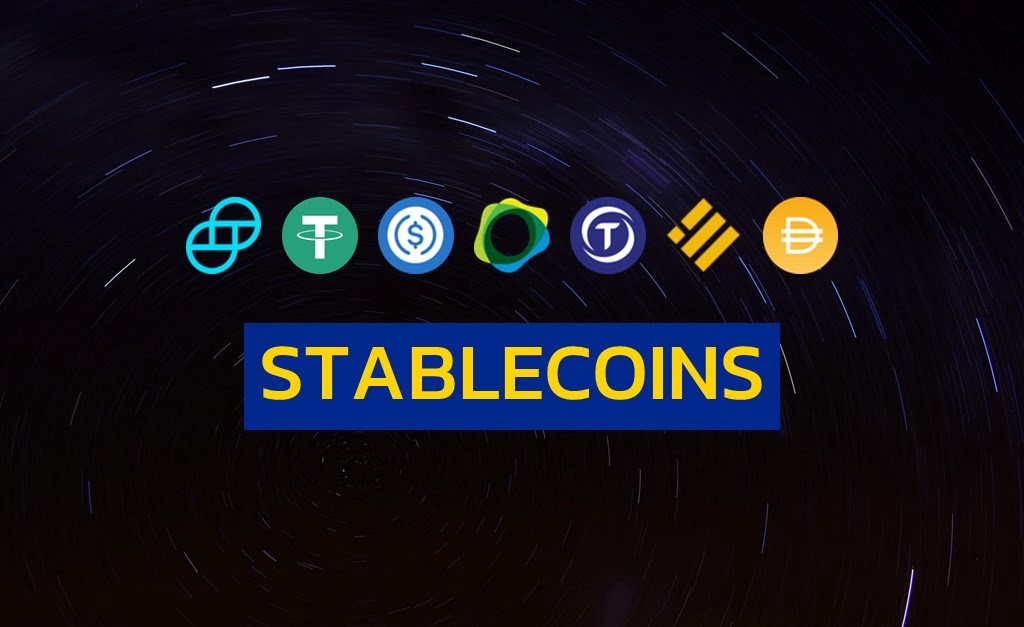As a beginner, you must have heard of the term stablecoin and have wondered what it means, In this post, I have given a brief explanation of what a stablecoin is and also the type that is the best.
What are Stablecoins?
Stablecoins are cryptocurrencies that have their value tied to that of another currency, most popularly, the U.S. dollar.
Stablecoins derive their value through multiple methods but the most common ones are these four underlying collateral structures:
1. Fiat-backed
2. Commodity-backed
3. Crypto-backed
4. Algorithmic
Let’s discuss how each of these types of stablecoins holds their value stable, the pros and cons of each of these stablecoins, and some examples of each.

Fiat-Backed Stablecoins
These are the most widely used stablecoins that are backed 1:1 by fiat currency. The collateral backing the stablecoin is in reserve with the central issuer of the stablecoin or held with a reputable financial institution.
Pros:
$1 of the stablecoin is backed by $1 of fiat currency, so the value of the currency undergoes little to no fluctuation.
Cons:
Since the stablecoin’s value is derived from the assets owned by the central issuer, it is inherently centralized. By being centralized, the stablecoin issuer may blacklist addresses from using the stablecoin and may mint or burn stablecoin tokens arbitrarily.
This also means that there is a single point of failure. If the central issuer goes bankrupt or is revealed to not have the equivalent amount of fiat currency to back the stablecoins issued, the stablecoins may end up worthless.
Thus, immense trust in the central issuer is needed.
Examples:
1. Tether (USDT) is pegged to $1.00 and is issued by the Hong Kong company Tether Limited, which is owned by the owners of Bitfinex. It has the highest daily and monthly trading volume of any cryptocurrency in the market.
2. USD Coin (USDC) is pegged to $1.00 and is issued by a consortium called Centre, which was founded by the United States company Circle. USDC reserves are attested (not audited) monthly by the accounting firm, Grant Thornton, LLP.
3. Gemini Dollar (GUSD) is pegged to $1.00 and is issued by the United States company Gemini Trust LLC. GUSD reserves are routinely audited by the accounting firm, BPM LLP.
4. True USD (TUSD) is pegged to $1.00 and is issued by the United States company TrueToken. It is claimed to be fully backed by collateral held in escrow by multiple third-party trust companies.
5. Pax Dollar (USDP) is pegged to $1.00 and is issued by United States company Paxos Trust Company. It is claimed that all collateralizing deposit is held at FDIC-insured U.S. banks and is overseen by U.S. auditing firm Withum.

Crypto-backed Stablecoins
These are stablecoins that derive their value from other cryptocurrencies. The minting of crypto-backed stablecoins is done through smart contracts instead of by central issuers.
Crypto-backed stablecoins are typically over-collateralized by the cryptocurrency collateralized asset to buffer against the price collateral of the inherently volatile asset. For example, DAI derives its $1 value by collateralizing $2 worth of ETH into the smart contract.
Pros:
Since crypto-backed stablecoins have the property of not being issued by a company or institution with agendas of their own as a central issuer, it inherently has less counter-party risk.
Also, by being over-collateralized, even if the market price of the collateralized currency drops but remains above a set threshold, the excess collateral acts as a buffer for the crypto-backed stablecoin.
Cons:
Even though crypto-backed stablecoins are not issued by a group of people, it is issued by a smart contract. This means that there is still a central point of failure where the smart contract’s vulnerabilities can be exploited. For example, hackers can interact with the smart contract to drain the collateralized assets backing the stablecoin.
We also have to remember that crypto-backed stablecoins are backed by inherently volatile cryptocurrency and even though the over-collateralization defends against most drops in the value of the collateralized currency, once the price of the collateralized asset drops below a set threshold, collateral is paid back into the smart contract to liquidate the collateralized debt position.
Examples:
DAI is pegged to $1.00 and is issued through MakerDAO’s Maker Protocol platform which accepts various cryptocurrencies as collateral.
Origin Dollar (OUSD) is pegged to $1.00 and is issued by the United States company Origin Protocol. It is 1:1 backed by other stablecoins like USDT, DAI, and USDC.

Commodity-Backed Stablecoins
Commodity-backed stablecoins derive their value by being pegged to physical assets like precious metals, oil, and real estate; the most popular being gold.
Pros:
Commodity-backed stablecoins not only work as a stable cryptocurrency but also act as opportunities to invest in assets that are difficult secure physically. For instance, finding a secure storage location for physical commodities like gold and silver is complex and expensive. However, commodity-backed stablecoins may be exchanged for the underlying tokenized asset.
It must be noted that not all other commodity-backed stablecoins can be exchanged for the underlying asset.
However, commodity-backed stablecoins may be exchanged for the underlying tokenized asset. It must be noted that not all other commodity-backed stablecoins can be exchanged for the underlying asset.
Cons:
Since most commodity-backed stablecoin’s value is pegged to physical assets, such as 1 oz of gold, that fluctuate in price, if the price of gold drops, the commodity-backed stablecoin’s value may drop in dollar price. Also, similarly to the issue with fiat-backed stablecoins, commodity-backed stablecoins derive their value from commodities owned by a central issuer.
Thereby, there is inherently high counter-party risk.
Examples:
Tether Gold (XAUT) is issued by United Kingdoms company, TG Commodities Limited and each XAUT is backed by 1 fine troy oz (t oz) of gold on a London Good Delivery bar.
PAX Gold (PAXG) is issued by United States company Paxos Trust Company and each token is backed by 1 fine troy oz (t oz) of gold a 400 oz London Good Delivery gold bar.

Algorithmic Stablecoins
Algorithmic stablecoins are stablecoins that are not collateralized by fiat or cryptocurrency as collateral. Instead, their price stability results from the use of specialized algorithms and smart contracts that manage the supply of tokens in circulation.
An algorithmic stablecoin protocol will reduce the number of stablecoin tokens in circulation when the market price falls below the price of the fiat currency it tracks. On the other hand, if the price of the token rises above the price of the fiat currency it tracks, new tokens of the stablecoin are minted to devalue the stablecoin and bring it back to the price of the fiat currency.
Pros:
Algorithmic stablecoins are issued through a series of complex mathematical equations, so it has low counterparty risk. As long as the protocol does not have flaws in its design, it operates without mistake.
Cons:
Failures in the minting and burning algorithm are devastating for algorithmic stablecoins because nothing is backing the stablecoin. Flaws in the algorithm design or external events that have not been accounted for may destroy algorithmic stablecoins’ value.
Examples:
USDD is designed to have a stable value of $1.00 and is issued by Singapore non-profit organization, the Tron Foundation.
TerraUSD (UST), now TerraClassicUSD (USTC), was designed to have a stable value of $1.00 and was issued by Singapore company Terraform Labs. It started de-pegging on May 7th, 2022, and fell to 30 cents on May 9. As of today, each USTC is valued at $0.0225.
Conclusion
All four of the types of stablecoins discussed here: fiat-backed, commodity-backed, crypto-backed, and algorithmic have inherent advantages and disadvantages.
As we can see, there are trade-offs between what the collateral asset is and the degree of counter-party risk in each stablecoin category. Since stablecoins are a relatively new financial instrument, it is not perfect and may never be.
The best thing to keep in mind is when choosing which stablecoin is best for your specific use cases, understand what you are holding and what your stablecoin token’s value is derived from.
I would like to end with an optimistic note that thanks to blockchain technology, inventions like stablecoins were able to come to light, so just imagine what more world-changing products are in store for us shortly!


